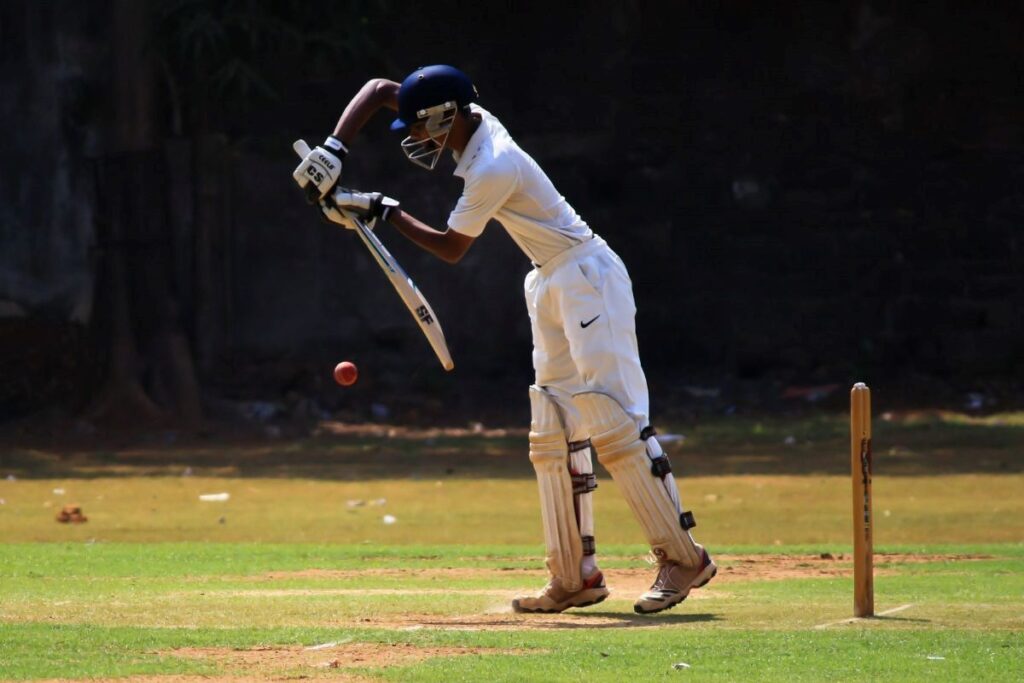Cricket balls and hockey balls are both hard spheres used in stick/bat sports, but they have distinct qualities in materials, size, weight, bounce, speed, cost, upkeep, and overall construction.
Here are 11 ways cricket balls differ from hockey balls:
- Weight – Cricket balls weigh 5.5-5.8 oz, hockey balls 5-5.5 oz.
- Size – Cricket balls have a 2.8-2.9 in diameter, hockey balls 3.5-3.7 in.
- Bounce – Cricket balls have a firm bounce, hockey balls bounce minimally.
- Materials – Cricket uses cork/leather, hockey balls are plastic.
- History – Cricket balls from 1600s England, hockey balls 1860s origins.
- Speed – Cricket bowls up to 100 mph, hockey balls off stickaround 90 mph.
- Spin – Cricket balls swing and seam, hockey balls can curve from shots.
- Records – Fastest cricket bowl 161.3 km/h, no speed records kept in hockey.
- Brands – Kookaburra, Dukes famed for cricket balls; numerous hockey ball brands.
- Storage – Cricket balls deteriorate over time, hockey balls very durable.
- Cost – Pro cricket balls $100+, hockey balls $5-$20 typically.
Below we’ll explore their specialized designs to appreciate how cricket and hockey balls are precisely engineered for their specific sports!

Difference in Weight
Standard cricket balls weigh 5.5-5.8 oz. Hockey balls are just slightly lighter on average between 5-5.5 oz.
The cricket ball’s weight lends momentum for swing speed. Hockey’s mass withstands solid stick impacts.
Both are heavier spheres requiring athletic swing strength compared to a featherlight baseball or tennis ball.
Difference in Size
Cricket balls maintain a standard diameter around 2.8-2.9 inches. Hockey balls are marginally bigger at 3.5-3.7 inches across.
Hockey’s larger ball dimension contributes to the sturdy feel from the stick. Cricket’s compact size challenges hand-eye coordination.
Difference in Bounce
Cricket balls have a firm, low bounce on the pitch from their layered cork interior and leather casing.
Hockey balls have an extremely minimal bounce on the artificial turf from their solid plastic construction.
So cricket balls retain their shape after bouncing, while hockey balls go dead off the stick.
Difference in Materials
Cricket balls have a cork interior layered with string windings, encased in a leather exterior shell. Hockey balls consist of solid plastic with no layers.
The cricket ball’s layered design allows a controlled bounce. The hockey ball is engineered for maximum durability and weather resistance.
Each material aligns with the sport’s needs.
History of Ball Types
Cricket balls originated from wood spheres in England in the early 1600s. The current standard emerged in the late 1700s.
Early hockey balls were crafted from wood before hard plastic spheres became standard in the late 1860s as manufacturing advanced.
So cricket balls uphold artisanal heritage, while hockey balls modernized with mass production.
Speed They Travel
The fastest cricket bowls exceed 90-100 mph from elite fast bowlers. The ball weight prevents extraordinarily high speeds.
Hockey balls typically travel around 70-90 mph when struck optimally. The solid plastic doesn’t reach extraordinarily high velocities off the stick.
So cricket balls allow slightly faster deliveries, but both limit speed versus a golf ball.
How Fast is a Bowl/Shot?
- Top cricket bowlers reach average speeds between 70-90 mph using pure arm strength and techniques.
- Hockey shots are struck around 80-90 mph on full drives for elite players.
So maximum shot speeds end up comparable between the sports.
World Records
- Fastest cricket bowl: 161.3 km/h or 100.2 mph by Shoaib Akhtar
- No speed records formally kept in hockey due to minimal variation.
The dense balls prevent extraordinarily fast speeds in either sport.
Brand Popularity
For cricket, Kookaburra and Dukes make premiere balls for top matches.
In hockey, brands like CranBarry, TK, and Grays manufacture popular balls with multiple quality tiers.
Each sport has recognized names known for optimized balls.
Storage and Maintenance
Cricket balls gradually lose their dynamic properties as the materials deteriorate over years of use.
Hockey balls retain their qualities extremely well for years if simply protected from temperature extremes during storage.
So hockey balls have superior durability over time.
Cost Considerations
Top cricket balls are handcrafted and cost $100+ for elite levels. Recreational cricket balls run $20+.
Hockey balls cost $5-$20 on average depending on recreational vs. competitive grade.
So hockey balls are more reasonably priced for hobby play.
In summary, while sharing solid spherical profiles, key differences make cricket and hockey balls specialized for their respective sports’ unique equipment requirements and conditions.
